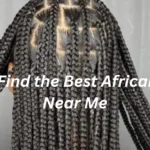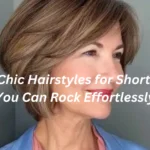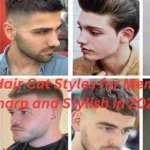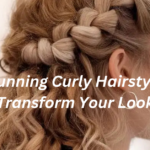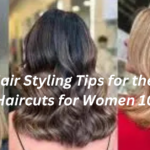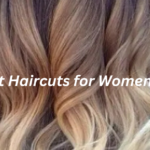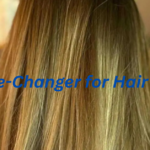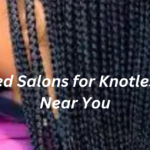Hairstyling is a transformative skill that can elevate any look, add personality, and enhance confidence. From understanding the right products to mastering basic and advanced techniques, knowing how to style hair effectively can make a significant difference. Whether you’re styling at home or looking to polish your skills as a professional, this comprehensive guide will break down the essentials for hairstyling across all hair types.
1. Understanding Your Hair Type for Optimal Styling
Before diving into styling, it’s crucial to recognize your hair type. Hair types fall into categories like straight, wavy, curly, and coily, and each has unique needs:
- Straight hair: Often requires volume-enhancing techniques.
- Wavy hair: Benefits from light products that accentuate its natural texture.
- Curly hair: Needs moisturizing products to combat frizz.
- Coily hair: Often thrives with styling creams and oils to define curls.
By selecting the right techniques and tools, you’ll achieve styles that look natural and last longer.
2. Essential Tools Every Stylist Should Own
Investing in quality hairstyling tools will make your styling process easier and more effective. Here are some must-haves:
- Flat Iron: Essential for creating sleek, straight styles or beachy waves.
- Curling Iron or Wand: Ideal for curls and waves; opt for adjustable temperature controls for flexibility.
- Blow Dryer with Diffuser and Nozzle: Helps add volume, define curls, or smooth hair as needed.
- Combs and Brushes: Tailored brushes (e.g., round, paddle, or detangling) for different styling needs.
- Hair Clips and Sectioning Tools: Keep hair in place while working in sections.
Having high-quality versions of these tools can make a noticeable difference in your hairstyling results.
3. Hairstyling Techniques for Volume
For those seeking more volume, especially those with straight or fine hair, consider these techniques:
- Blow-Dry Upside Down: Focus the blow dryer at the roots to build volume.
- Tease with a Comb: Lightly back-comb sections to lift roots.
- Use Volumizing Products: Mousse or root-lifting sprays can be applied before blow-drying to add texture and body.
Mastering volume techniques is a game-changer for styles that feel full and dynamic.
4. Achieving Sleek, Straight Styles
Sleek hair is timeless, but keeping it smooth requires a few tricks:
- Heat Protectant: Always apply a protectant to prevent heat damage.
- Flat Iron in Sections: Small sections allow for a more polished finish.
- Finishing Serum or Oil: A tiny amount of serum can enhance shine and prevent flyaways.
Smooth, straight hair works for nearly every occasion and gives a polished, professional appearance.
5. Creating Defined Curls and Waves
For defined curls and waves, especially on wavy and curly hair types, follow these steps:
- Use a Diffuser for Natural Waves: A diffuser attachment on a low heat setting can help define waves without frizz.
- Curling Iron for Defined Curls: Wrap hair around the barrel for tight curls or use larger sections for loose waves.
- Finishing with Light-Hold Spray: Keeps curls in place without weighing them down.
Experimenting with different curling techniques allows for a variety of looks, from beachy waves to more structured curls.
6. Styling Short Hair vs. Long Hair
Short Hair: Pixie cuts or bobs often benefit from volumizing products and styling pastes that create texture. Blow-drying or finger-styling adds definition.
Long Hair: Styles like curls, waves, or braids suit longer lengths. Layering is beneficial for added movement and a lighter, airy look.
7. Choosing Hairstyling Products Wisely
The right product makes all the difference in hair manageability and style longevity:
- Mousse: Adds volume and hold.
- Gel: Provides strong hold and control.
- Serums and Oils: Add shine and control frizz.
- Hair Sprays: Available in various strengths for lasting styles.
Try products tailored to your hair type to prevent product buildup and maintain a fresh look.
8. Protecting Hair Health While Styling
Frequent styling can damage hair without the right precautions:
- Limit Heat Styling: Use heat sparingly and choose tools with temperature control.
- Use Heat Protectants: Sprays and creams protect hair from high temperatures.
- Opt for Hair Masks: Weekly deep-conditioning treatments restore moisture and strength.
Healthy hair is the foundation of any good style, so protecting it should be a top priority.
9. Quick Hairstyling Tips for Every Day
For those on the go, here are a few easy, quick hairstyling tips:
- Ponytail with a Twist: Wrap a strand around the base for a polished look.
- Half-Up Style: Pull the top half back and secure it with a clip for a sophisticated, quick style.
- Headbands and Hair Clips: Accessorize for instant style without effort.
These techniques make it possible to achieve a chic look without the hassle.
10. Professional Techniques for Long-Lasting Styles
Professionals use layering techniques to create long-lasting styles that withstand humidity and wear:
- Root Lifting: Adds volume to keep hair from falling flat.
- Using Lightweight Sprays: Prevents hair from getting weighed down.
- Setting with Cold Air: Finishes the style and locks it in place.
Following these tips helps styles hold their shape and maintain their appearance all day.
11. Hairstyling Trends to Try
Staying current with trends keeps styles fresh and exciting:
- Braids and Twists: From fishtails to French braids, these styles add sophistication.
- Messy Buns and Updos: Perfect for a chic, effortless look.
- Color Accents: Temporary hair colors or highlights add flair.
Exploring trends is a great way to refresh your look and keep things interesting.
FAQs About Hairstyling
1. How often should I wash my hair when styling frequently?
Every two to three days is ideal to maintain natural oils, but this varies by hair type.
2. What’s the best way to keep curls from falling flat?
Start with a lightweight mousse and finish with a flexible-hold hairspray to help curls last longer.
3. Which heat protectant is best for all hair types?
Look for lightweight, non-greasy sprays with ingredients like argan oil, which works for most hair types.
4. Are there any natural hairstyling options?
Yes, use natural oils, aloe vera, or leave-in conditioners for styling without harsh chemicals.
5. Can I style hair without heat?
Yes, methods like braiding damp hair or using hair rollers overnight can create waves without heat.
6. How can I keep my hair from getting frizzy?
Use anti-frizz serums, avoid over-drying, and apply a finishing spray to keep frizz under control.
Conclusion
Hairstyling is a mix of art and science, involving the right products, tools, and techniques for each hair type and desired look. By understanding and mastering these principles, anyone can achieve beautiful, salon-worthy styles with ease. Whether you’re aiming for sleek elegance or voluminous curls, the right approach will make hairstyling a breeze and elevate your confidence.

